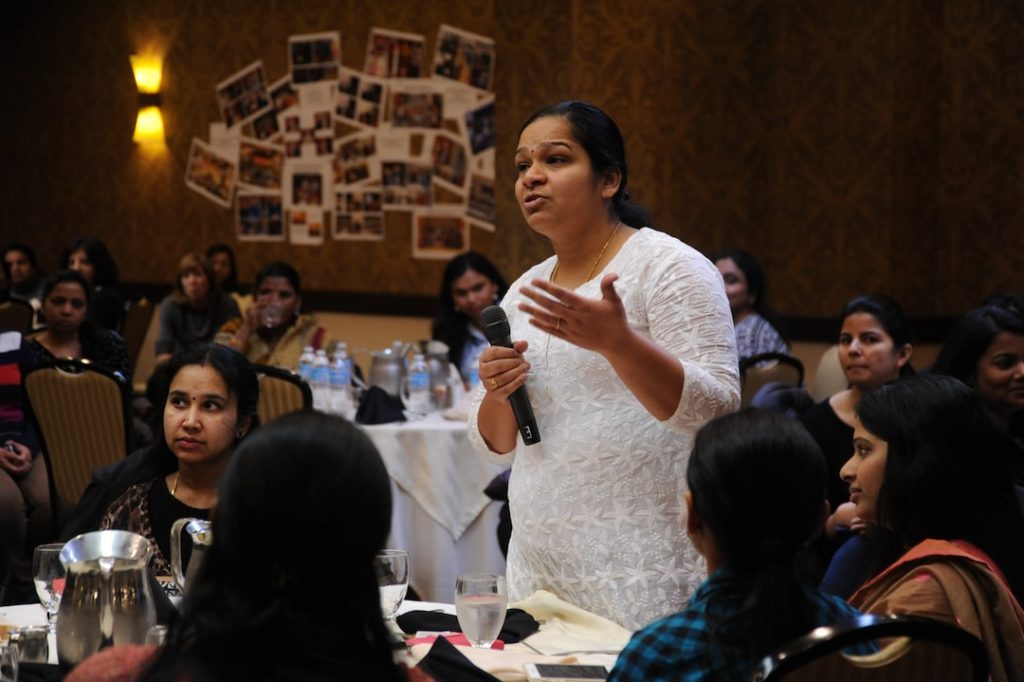Introduction: Understanding the Challenges Faced by Nontraditional Students
Nontraditional students, also known as adult learners, are individuals who pursue higher education later in life or have unique circumstances that differ from the traditional college student. These students often face a variety of challenges that can make it difficult for them to succeed academically. Understanding these challenges is crucial in order to provide the necessary support and resources for nontraditional students to thrive.
One common challenge faced by nontraditional students is the juggling act of balancing school, work, and family responsibilities. Many nontraditional students have full-time jobs and families to take care of, which can make it challenging to find the time and energy to focus on their studies. Additionally, nontraditional students may also face financial constraints, as they may not have access to the same financial resources as traditional students.
Types of Scholarships Available for Nontraditional Students
Scholarships can be a valuable resource for nontraditional students looking to pursue higher education. There are several types of scholarships available that cater specifically to the needs of nontraditional students.
Merit-based scholarships are awarded based on academic achievement or other accomplishments. These scholarships are typically competitive and require applicants to have a strong academic record or demonstrate exceptional talent in a particular field.
Need-based scholarships, on the other hand, are awarded based on financial need. These scholarships take into account an individual’s income, assets, and other factors that may affect their ability to pay for college.
Career-specific scholarships are designed for individuals pursuing a specific career path or field of study. These scholarships often require applicants to demonstrate their commitment to a particular profession and may have additional requirements such as internships or work experience.
Community-based scholarships are offered by local organizations or businesses within a community. These scholarships are often tailored to the needs of nontraditional students in a specific area and may have unique eligibility criteria.
How to Find Scholarships That Fit Your Needs as a Nontraditional Student
Finding scholarships that fit your needs as a nontraditional student can be a daunting task, but with the right strategies, it is possible to uncover opportunities that can help fund your education.
One of the first steps in finding scholarships is to research scholarship opportunities. This can be done by visiting college websites, checking with local organizations, or reaching out to professional associations in your field of interest. Many colleges and universities have dedicated scholarship offices or financial aid departments that can provide guidance and resources for nontraditional students.
Another effective strategy is to utilize scholarship search engines. These online platforms allow you to input your personal information and preferences, and they will generate a list of scholarships that match your criteria. Some popular scholarship search engines include Fastweb, Scholarships.com, and College Board’s Scholarship Search.
Networking with organizations and individuals can also be a valuable way to find scholarships. Attend career fairs, join professional associations, and reach out to local businesses or community organizations to inquire about scholarship opportunities. Building relationships with individuals who are connected to the field you are interested in can lead to valuable scholarship recommendations.
Tips for Crafting a Winning Scholarship Application
Crafting a winning scholarship application requires careful attention to detail and a strong understanding of what the scholarship committee is looking for. Here are some tips to help you stand out from the competition:
First and foremost, it is important to thoroughly understand the scholarship requirements. Read through the application instructions carefully and make sure you meet all the eligibility criteria. Pay attention to any specific essay prompts or additional materials that may be required.
Highlighting your unique experiences and qualifications is another key aspect of a winning scholarship application. Nontraditional students often have a wealth of life experiences that can set them apart from traditional students. Whether it’s work experience, volunteer work, or personal challenges you’ve overcome, make sure to showcase these experiences in your application.
Writing a compelling personal statement is also crucial in a scholarship application. This is your opportunity to tell your story and explain why you are deserving of the scholarship. Be authentic and genuine in your writing, and make sure to address any specific prompts or questions provided.
Common Mistakes to Avoid When Applying for Scholarships
When applying for scholarships, it is important to avoid common mistakes that can negatively impact your chances of receiving an award. Here are some common mistakes to avoid:
Missing deadlines is one of the most common mistakes made by scholarship applicants. Make sure to carefully note the application deadline and give yourself plenty of time to gather all the necessary materials and complete the application.
Failing to follow instructions is another mistake that can cost you a scholarship. Scholarship committees often have specific requirements for applications, such as word limits, formatting guidelines, or additional materials. Make sure to carefully read and follow all instructions provided.
Submitting incomplete applications is another common mistake. Double-check that you have included all the required documents and materials before submitting your application. Missing even one piece of information can disqualify you from consideration.
Strategies for Balancing School, Work, and Family as a Nontraditional Student
Balancing school, work, and family responsibilities can be challenging for nontraditional students, but with the right strategies, it is possible to find a healthy balance.
One effective strategy is to utilize time management techniques. Prioritize your tasks and create a schedule that allows you to allocate time for studying, work, and family commitments. Set realistic goals for yourself and break larger tasks into smaller, manageable chunks.
Seeking support from family and friends can also be beneficial in balancing your responsibilities. Communicate with your loved ones about your goals and commitments, and ask for their understanding and support. Delegate tasks when possible and lean on your support system for help when needed.
Utilizing resources provided by the school is another strategy that can help nontraditional students balance their responsibilities. Many colleges and universities offer support services specifically for nontraditional students, such as childcare services, flexible class schedules, or online courses. Take advantage of these resources to make your academic journey more manageable.
Resources for Nontraditional Students: Support Networks and Mentors
Nontraditional students can benefit greatly from support networks and mentors who understand their unique challenges and can provide guidance and encouragement. Here are some resources available for nontraditional students:
Many colleges and universities have dedicated resources for nontraditional students. These may include support groups, counseling services, or academic advising specifically tailored to the needs of nontraditional students. Reach out to your school’s student services department to inquire about these resources.
Professional organizations can also be a valuable resource for nontraditional students. These organizations often have networking events, mentorship programs, and scholarships specifically for individuals in a particular field. Joining a professional organization can provide you with access to a supportive community of individuals who understand the challenges you face.
Mentoring programs specifically designed for nontraditional students can also be beneficial. These programs pair nontraditional students with mentors who have successfully navigated the challenges of higher education as an adult learner. Mentors can provide guidance, support, and advice throughout your academic journey.
Overcoming the Stigma of Being a Nontraditional Student
Nontraditional students often face stigma or negative stereotypes due to their age or life circumstances. Overcoming this stigma is crucial in order to thrive academically and personally.
One way to address negative stereotypes is by educating others about the unique challenges faced by nontraditional students. Share your experiences and challenges with others, and help them understand the value that nontraditional students bring to the classroom and workforce.
Embracing your unique perspective and experiences is another way to overcome stigma. Nontraditional students often bring a wealth of real-world experience and maturity to their studies, which can be an asset in the classroom. Embrace these qualities and use them to your advantage.
Advocating for nontraditional students is also important in overcoming stigma. Speak up about the challenges you face and advocate for policies and resources that support nontraditional students. By raising awareness and advocating for change, you can help create a more inclusive and supportive environment for nontraditional students.
Success Stories: Inspiring Examples of Nontraditional Students Who Achieved Their Goals
There are countless success stories of nontraditional students who have overcome challenges and achieved their goals. These stories serve as inspiration and motivation for other nontraditional students. Here are a few examples:
– Jane Doe, a single mother of two, worked full-time while pursuing her bachelor’s degree in nursing. Despite the challenges of balancing work, school, and family responsibilities, she graduated with honors and is now working as a registered nurse.
– John Smith, a military veteran, returned to school after serving in the armed forces. He utilized his military experience to pursue a degree in engineering and is now working for a leading aerospace company.
– Sarah Johnson, a former stay-at-home mom, decided to pursue her passion for art later in life. She enrolled in an art program and has since become a successful freelance artist, showcasing her work in galleries across the country.
These success stories demonstrate the resilience and determination of nontraditional students. They serve as a reminder that it is never too late to pursue your dreams and that with hard work and perseverance, anything is possible.
Conclusion: Empowering Nontraditional Students to Break Barriers and Achieve Success
Nontraditional students face unique challenges on their journey to higher education, but with the right support and resources, they can overcome these obstacles and achieve their goals. By understanding the challenges faced by nontraditional students, providing scholarships tailored to their needs, offering support networks and mentors, and advocating for their inclusion, we can empower nontraditional students to break barriers and achieve success.
It is important for organizations and individuals to recognize the value that nontraditional students bring to the table and to provide the necessary support and resources to help them succeed. By investing in nontraditional students, we are investing in a diverse and talented workforce that can contribute to the growth and development of our communities. Let us all work together to create a more inclusive and supportive environment for nontraditional students, so they can thrive and achieve their full potential.




